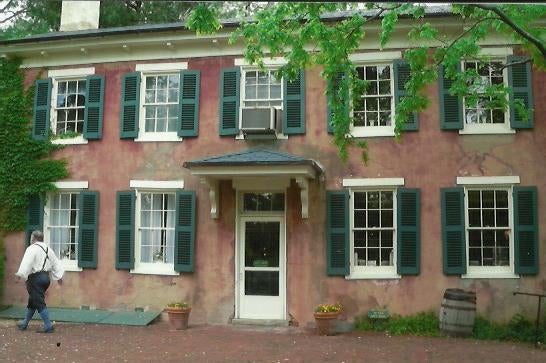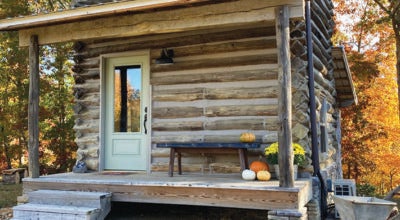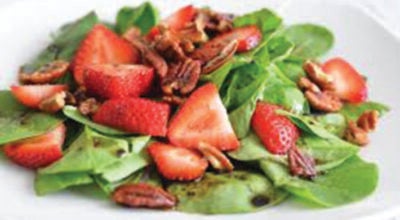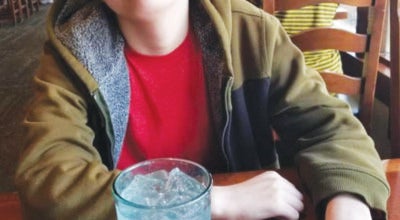Presidential Sites: William Henry Harrison associated with two locations
Published 9:31 am Thursday, February 10, 2022
|
Getting your Trinity Audio player ready...
|
By Betty Etchison West
For the Enterprise
Eight Presidents of the United States were born in Virginia: George Washington, Thomas Jefferson, James Madison, James Monroe, William Henry Harrison, John Tyler, Zachary Taylor and Woodrow Wilson.
One or more sites are connected to seven of the eight men are open to the public today. Therefore, Virginia is a great place for North Carolinians interested in presidential history to visit.
Zachary Taylor’s family was on its way from their home in Virginia to Kentucky where they planned to settle. While on that trip, the Taylors stopped at a plantation in Orange County, Va. for a visit. It was there that their son, Zachary, was born, but there is no building standing at that site in Virginia so to visit a site connected to President Taylor, one will have to travel to Kentucky.
There are not one but two sites connected to the ninth President of the United States, William Henry Harrison. Only one of those is in Virginia. The other one is in Indiana. It is only 249 miles from Mocksville to Harrison’s birthplace, Berkeley Plantation in Virginia, via I-40 and I-85, but it is 620.5 miles to Grouseland, the Harrison mansion, in Vincennes, Ind. Both houses are interesting and are well worth the effort that it take to make the trips.
When William Henry Harrison ran for President of the United States, the symbols used in his campaign were a log cabin and a jug of hard cider. It seemed to have been believed that being born in a log cabin was an asset to any person running for president. Using those symbols indicates just how misleading symbols can be. William Henry Harrison was not born in a log cabin, but in a beautiful mansion which is located in Virginia, on the bank of the James River. That house was built in 1726 by William Henry Harrison’s grandfather, Benjamin Harrison. Members of the Harrison Family lived in the mansion for many years, but lost the plantation before the Civil War because of financial problems. During the Civil War, Union troops occupied the mansion. They chopped up the Harrison’s furniture for firewood and almost destroyed the place.
In 1907, John Jamieson, a drummer boy in McClellan’s Army that had occupied the place during the Civil War, discovered that the plantation, which included the mansion, was for sale. He bought it. He and his family have restored the house to its beautiful original condition.
After William Henry Harrison was elected President, he left his home in Indiana and returned to his birthplace to write his inaugural address. He wrote the address in the room which was his mother’s bedroom, the room where he was born. Actually, that speech was William Henry Harrison’s undoing. It was long, over two hours, and he delivered his inaugural speech in inclement weather without wearing warm clothes. After his inauguration, the President took a cold which turned into pneumonia. President William Henry Harrison died 31 days after he was inaugurated as the ninth President of the United States.
A visit to the Berkeley Plantation House, which is on the bank of the James River, is made interesting by the docents (guides), who are dressed in period costume. The tour begins in the basement where a film concerning the Harrison Family is shown—there were other Harrisons beside William Henry who have played an important part in American history. For example, Benjamin Harrison V, who was also born at Berkeley, was a signor of the Declaration of Independence
The tour of the Berkeley Mansion begins on the main floor. The visitor enters through a large hall which has door on each end to allow the cool breezes from the beautiful James River to flow through. From the hall, look up the stairs and see the music gallery where musicians would play to entertain the guests in the main hall. Next you enter the parlor where there is a Chippendale setee whose original stitched covering took three women eight years to complete and a gentleman Secretary among other items. Most of the furniture in the parlor and the other rooms on the main floor was not owned by the Harrisons, but is furniture from the period when they owned the property. After visiting the other rooms on the main floor, the visitor is free to visit the grounds and walk to the bank of the river.
The upper floor at the Berkeley Mansion is not open to the public because it is occupied by Mr. Jamison’s son and his wife, Malcolm and Grace Jamison. The Jamisons deserve a great deal of praise for maintaining the property and allowing the public to visit it. I talked with Mr. Jamison, who was in the yard when I visited. We had a nice discussion about the difficulties of keeping up a historic property.
William Henry Harrison’s ambition was to be a doctor, but he turned out to be an Indian fighter, which is how he ended up in the West. He was appointed Governor of the Indiana Territory. After living in other houses, Harrison wanted to build a house somewhat like his birthplace. In 1803 and 1804 he built a modified Federal style house of hand-made brick. That house is near the Wabash River. It is a large house which the Harrisons probably needed because they had 10 children. Mr. Harrison loved to hunt grouse, which is a small bird. He, therefore, named his house Grouseland and covered some walls with grouse wallpaper.After the Harrisons left Grouseland, it had other owners. At least one used it as a barn to store hay and allowed pigs to wander around on the beautiful floors in the halls.
The Francis Vigo Chapter of the National Society of Daughters of the American Revolution rescued the house, and it has been restored to its original glory, which makes it well worth the 620.5 miles trip from Mocksville to Vincennes, Ind. by way of I-40, I-75 N and I-64 W.
The Francis Vigo Chapter administers the Grouseland property. Call 812-882-2096 for information about the hours when the house is open to the public and when tours are available. Almost all of the presidential sites operate on different hours in winter and some are closed so it is best to call before you plan to visit any presidential sites.
Berkeley Plantation is one of a number of James River Mansions that are open to the public. This is exciting for people who enjoy visiting historical properties and who love antiques to visit the James River Plantations because all of the mansions are most interesting architecturally and are filled with antiques.






